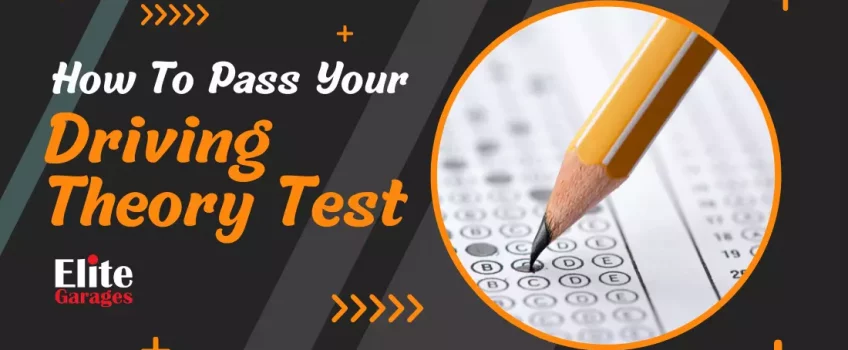
Simple Guide To Passing Your Driving Theory Test
The first step for every new driver is to pass the driving theory test to get out on the road. You may take the examination at any time while learning how to drive, but you must have previously completed it to apply for the practical exam. Indeed, some find it a little intimidating but the sooner you get it done, and the more you practice, the better. The question is: “How do I pass my driving theory test easily”?
What Is A Driving Theory Test?
The driving theory test is specifically designed to test your driving knowledge and hazard perception skills. First introduced on the 1st of July 1997, this is the first step to becoming a UK driving licence holder. The next step is booking your practical driving test but not until you pass the driving theory test which is split into two parts.
The test includes multiple-choice questions and a hazard perception test. You will do both parts one after the other and must pass them in the same sitting. While you may not book a practical driving test until passing the driving theory test, you can have driving lessons beforehand.
These tests are designed to prepare you for life on the road and provide some valuable information. This includes the Highway Code, road safety, how to identify hazards, general car care and more.
The Hazard Perception Test
The hazard perception test consists of a series of 14 video clips that assess your ability to identify hazards on the road. This is generally either a developing accident or a near-miss situation that you can anticipate while driving on a daily basis. Here is how it works:
- 13 videos with ONE hazard and the one video with TWO
- You can score a maximum of FIVE points per hazard (10 in total for the video with TWO hazards)
- The sooner you identify the developing hazard, the more points you will receive. This resembles real life as your actions would dictate the likelihood of avoiding the collision
Tips For Passing My Driving Theory Test
To pass the driving theory test, you must score at least 43 out of 50 questions in the multiple-choice section and 44 out of 75 for the Hazard Perception test. Since it is quite a complex test, you need plenty of time to revise and prepare before and on the day of the test.
Do Your Research And Study Well
The DVSA (Driver and Vehicle Standards Agency) advises that you study for at least 20 hours before taking the driving theory test. While that may seem to be a lot, there are over 1,000 questions that the computer will choose at random so you need to know what you’re talking about. Make sure to study the Highway Code and other theory books and make sure you practice several times with friends and family.
Practice And Prepare Properly
The old saying that “practice makes perfect” rings true as the more practice driving theory tests you take, the more your confidence will grow. By doing these practice tests, you will become more familiar with the format and the time pressure which will help make you feel less flustered on the day.
If you’re preparing for your exam, there are several free websites offering mock driving tests but we strongly advise you to use the Driving Test Success Limited app £4.99). In there you will find every official DVSA question along with mock hazard perception tests and other helpful learning resources.
Get To Your Driving Theory Test Early
Getting to the test early is vital so you have more time to check in, place your phone and other belongings in a locker and prepare yourself mentally for what lies ahead. The more time you spend preparing and familiarising yourself with the testing centre, the better headspace you will be in. When checking in, you’ll need to show your photocard ID to sit the test.
Don’t Rush Your Answers
Among the biggest mistakes people make is rushing the driving theory test. There is no need to speed through the questions as you have 15 minutes beforehand to get used to the software and answer some practice questions. Be sure to make the most of the extra time as there might be an issue with the software which can be resolved beforehand to avoid losing time.
Tips For Passing The Hazard Perception Test
The only way to pass the hazard perception test the first time is to do your research, prepare properly and think before you answer. Here are some simple but effective tips to help you pass your hazard perception test.
Practice Makes Perfect
As with the driving theory test, nothing comes close to good, honest hard work. Your 20 hours of revision should include practising for the hazard perception test as well. Don’t be fooled by thinking the test is easy as the scenarios are far more difficult than you realise. Go into the test without practising at your own peril as it’s very easy to become overwhelmed and answer incorrectly.
Learn From The Passenger Seat
Since the waiting list for a driving theory test can be rather long, you might have to wait weeks or even months. So, to make the most of this time, take notice of how others drive and hone your perception skills, especially while in the passenger seat. The more hazards you spot in real life, the easier your test is likely to be!
Don’t Get Distracted
To score sufficient points to pass the hazard perception test, you will need to define a “developing hazard” and react accordingly. If you lose focus and get distracted, you won’t score as many points. In the end, that lack of focus could make all the difference so make sure you concentrate fully during the test so you can relax once it’s over.
Stay Focused And Pay Attention
Remember, one of the clips has two hazards so don’t lose focus on any of the clips until it’s finished. Since this clip is worth double points, don’t lose out on spotting the second hazard simply because you’ve already identified a hazard in the first few seconds.
Avoid Clicking The Mouse Excessively
Contrary to what some may think, this is not a clever tactic to get you more points. The software for the driving theory test will invalidate a clip if it perceives that you are clicking excessively. If you get marked for this too often, you will receive an automatic fail. The same applies when clicking once every few seconds instead of when you notice a hazard.
How Long Is The Driving Theory Test?
The time for the driving theory test is 1 hour and 20 minutes which is more than enough if you studied and prepared properly. You don’t have to take a break nor do you have to use the full 57 minutes for the first part but take your time and only continue if you’re happy with your answers. The driving theory test is broken down into the following:
- 57 minutes for the 45 multiple-choice questions and 5 case study questions
- A 3-minute optional break
- 20 minutes for the hazard perception test
During the 57 minutes, you can review your questions and even skip some if you don’t know the answer. Just remember to go back later as a calculated guess is better than leaving it blank. The hazard perception test is different as you can’t review any of the questions since you only get one attempt at each clip.
How To Book Your Driving Theory Test
You can take the driving theory test from your 17th birthday onwards. The best and quickest way to book your theory test is online on the government website. Here’s what you will need:
- UK driving licence number
- Email address
- Credit or debit card
The current cost of the driving theory test is £23 and the driving test is £62. Make sure that you are well-prepared and give yourself plenty of time to revise before booking your test.
For more helpful advice on all things motoring, read our blog and join us on social media. You might find some useful articles on MOTs, tyres, servicing and general vehicle maintenance.
About Us
Opening Times
Saturday : 8:30–4:00
Sunday : closed
More Information
Contact UsCustomer Information Pack
Check MOT Due Date
Free MOT reminder
Careers


